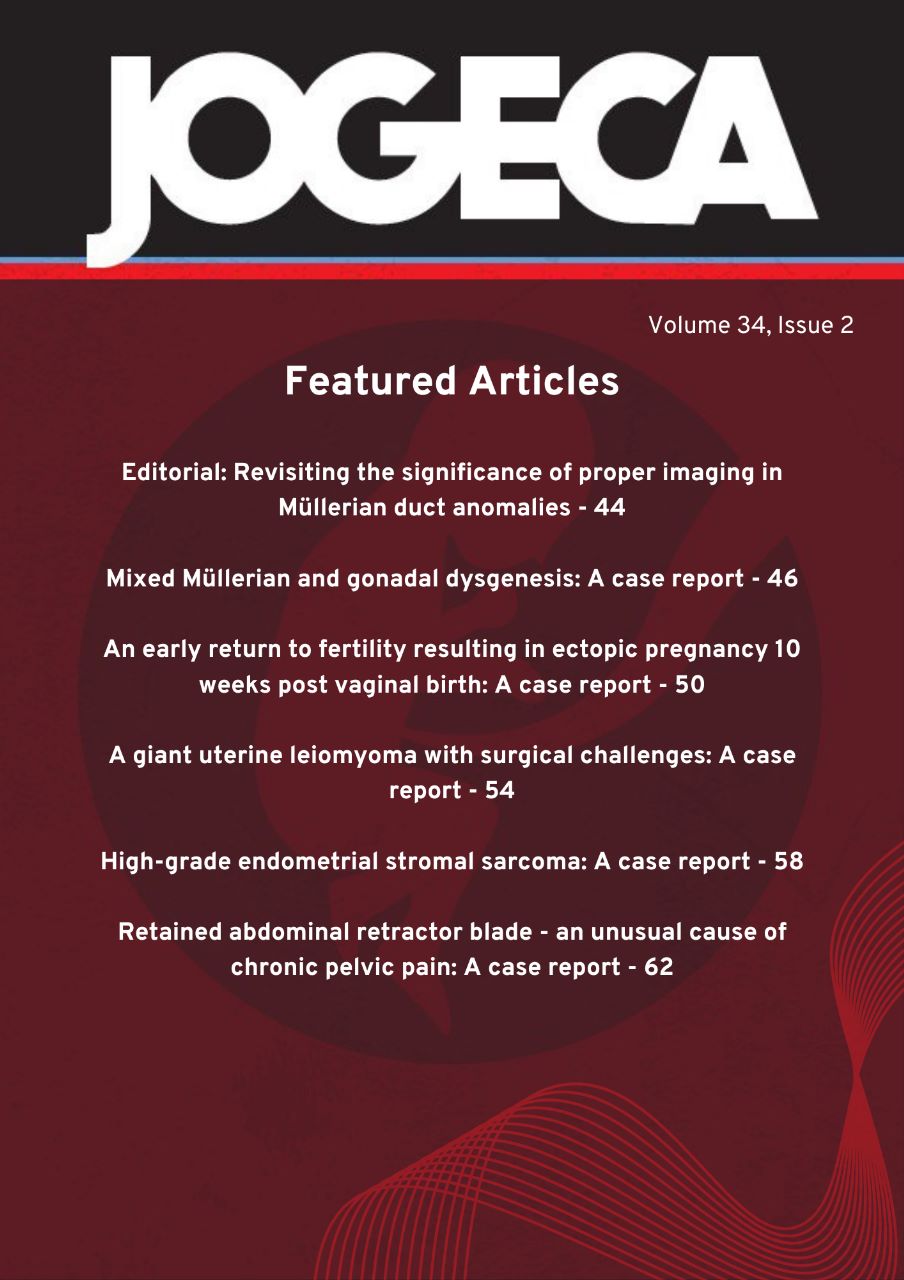Infection in pregnancy; understanding impact on placental microenvironment and preterm birth: a review
DOI:
https://doi.org/10.59692/jogeca.v29i1.347Keywords:
Infection, HIV, Zika, Malaria, Placenta, Preterm birth, StructureAbstract
Background: Pregnancy increases susceptibility to and severity of infections caused by certain microbes and parasites. The presence of these infectious agents at the maternofetal interface may lead to adverse pregnancy outcomes including preterm birth either via direct action of the microbes or indirectly via alteration of the placental microenvironment.
Objective: To summarize the literature regarding the role of various infectious agents in alteration of placental microenvironment and predisposition to preterm birth.
Method: A review search using Google scholar, PubMed, Cochrane Library and Trip database was conducted at the University of California San Francisco. A total of 880 abstracts were reviewed and a total of 95 studies were included. Studies were included if they reported any information on infection during pregnancy, effect on placenta or fetal membranes or risk of preterm birth.
Results: The current evidence indicates that various infectious agents affect pregnancy and alter placental microenvironment at the maternofetal interface. Severity of these infections increases with gestation. Additionally, these infections are associated with the risk of adverse obstetric outcomes including preterm birth. Conclusion: Prevention, early detection and treatment of these infections including those that are asymptomatic is important in maintaining integrity of the placenta and in reducing the burden of preterm births.
Downloads
Published
How to Cite
Issue
Section
Categories
License
Copyright (c) 2017 Authors

This work is licensed under a Creative Commons Attribution 4.0 International License.




